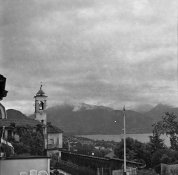Hello everyone,
I have noticed a large number of small random spots on b&w Fujifilm Neopan 400CN 120 film which was developed using C41 process. A few months ago I have developed my first 400CN film and noticed this problem. Initially I thought that the washing was terrible and blamed it on that. However, a few days ago I have developed 4 films in the same tank (two 400CN b&w and two colour films) and the spots appeared on ly on the 400CN films and not on the colour films. I am controlling temperature at 38 degrees with my Anova sous vide gadget and the temperature is verified with a manual old school mercury thermometer. I am using constant manual rotation during development and fixing.
I have scanned a few negatives to show the spots. The small spots are there all over the b&w negatives and more visible on the light parts of the negative. The colour scans show the Fujifilm Pro 400N without such spots even though the films were developed at the same time in the same tank.
Has anyone experienced these issues? What could cause it?
Many thanks
I have noticed a large number of small random spots on b&w Fujifilm Neopan 400CN 120 film which was developed using C41 process. A few months ago I have developed my first 400CN film and noticed this problem. Initially I thought that the washing was terrible and blamed it on that. However, a few days ago I have developed 4 films in the same tank (two 400CN b&w and two colour films) and the spots appeared on ly on the 400CN films and not on the colour films. I am controlling temperature at 38 degrees with my Anova sous vide gadget and the temperature is verified with a manual old school mercury thermometer. I am using constant manual rotation during development and fixing.
I have scanned a few negatives to show the spots. The small spots are there all over the b&w negatives and more visible on the light parts of the negative. The colour scans show the Fujifilm Pro 400N without such spots even though the films were developed at the same time in the same tank.
Has anyone experienced these issues? What could cause it?
Many thanks














